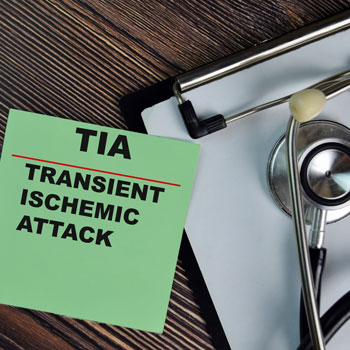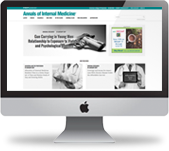
Closing the gap on osteoporosis
A new clinical guideline from ACP focuses on pharmacologic treatment of primary osteoporosis or low bone mass to prevent fractures in adults.
Internal medicine physicians are one of the first lines of defense against poor osteoporosis outcomes, especially considering long wait times for subspecialist care.
“With our population aging the way that it is, we're having to become more and more aware of osteoporosis as a very real disease with a real risk of fracture,” said Kendall F. Moseley, MD, an associate professor of medicine at Johns Hopkins University School of Medicine in Baltimore.
While there have been recent advances in diagnostic technologies and treatments for the disease, patients are still falling through the cracks, according to the Bone Health and Osteoporosis Foundation.
“At-risk patients are often not screened to establish fracture probability and not educated about fracture prevention. Most concerning, the majority of highest risk women and men who have a fracture(s) are not diagnosed and do not receive effective, FDA-approved therapies,” the group wrote in a consensus statement published in April 2022 by Osteoporosis International.
Even in the most vulnerable patients who have recently sustained a fragility fracture (often defined as a bone fracture from a fall at standing height or lower), osteoporosis treatment rates are as low as 10%, said Elaine W. Yu, MD, MMSc, an associate professor at Harvard Medical School and director of the Bone Density Center at Massachusetts General Hospital in Boston.
“Part of this has to do with patient fears about rare complications of treatment,” she said. “As clinicians, we need to improve how we acknowledge the concerns of patients while also providing the important context that these medications are incredibly effective at preventing fractures and have a very low rate of complications when used appropriately.”
Those effective medications were the focus of a new ACP clinical guideline on pharmacologic treatment of primary osteoporosis or low bone mass to prevent fractures in adults, published in February by Annals of Internal Medicine. The guideline updated the College's prior recommendations, published in June 2017 by Annals.
Experts offered advice on identifying the patients most at risk for fracture and explained how the guideline can help clinicians close the osteoporosis treatment gap.
Identifying at-risk patients
Osteoporosis and its precursor, low bone mass (also called osteopenia), are common in older adults, particularly postmenopausal females but also males.
The age-adjusted prevalence of osteoporosis at the femoral neck and/or lumbar spine in 2017-2018 among U.S. adults ages 50 years and older was 12.6% (19.6% of women and 4.4% of men), according to a CDC report published in March 2021. The prevalence of low bone mass in this population was 43.1% (51.5% of women and 33.5% of men).
The ACP guideline defined osteoporosis as a bone mineral density (BMD) value at the femoral neck, lumbar spine, or both that is 2.5 standard deviations (SDs) or more below the mean BMD value for a young woman. Clinicians may diagnose osteoporosis in postmenopausal patients ages 50 years or older if this number of SDs, called a T-score, for the lumbar spine, total hip, or femoral neck is −2.5 or less, according to the guideline, which defined low bone mass as a BMD value at the femoral neck, lumbar spine, or both that is between 1 and 2.5 SDs below the mean BMD value for a young woman.
Still, there is controversy over whether bone density alone is adequate to diagnose the disease in all patients, according to Angelo Licata, MD, PhD, FACP, an endocrinologist at Cleveland Clinic's Endocrinology & Metabolism Institute who got involved in the nascent osteoporosis field in the 1980s. One of the greatest nuances is that there are qualitative aspects to bone strength that densitometry doesn't necessarily measure, such as the micro-architecture of the interlocking trabeculae that give compressive strength to bone, he noted.
The widely used Fracture Risk Assessment Tool (FRAX) can help clinicians predict a patient's fracture risk based on individual risk factors, which are a way of trying to discern the quality of bone apart from BMD measurements, Dr. Licata said. However, physicians can use their own judgment based on risk factors, as there is no evidence from randomized controlled trials demonstrating a benefit of fracture reduction when using FRAX scores for prescribing decisions, added Amir Qaseem, MD, PhD, MHA, FACP, lead author of the ACP guideline and the College's Chief Science Officer.
A newer tool to help predict fracture risk is the Trabecular Bone Score, which uses dual-energy X-ray absorptiometry (DXA) images to analyze the trabeculae (which are akin to the girders of a building) and approximate the 3-D bone architecture, Dr. Licata explained. “If you have ever seen photos of buildings being razed, they're breaking the girders, causing the weight of the building to collapse in on itself. And that's the analogy of how you get compression fractures in bone,” he said. “The damaged trabecular pattern is not strong enough to maintain the structure of a bone like a vertebra and collapses, producing the compression fracture.”
Therefore, BMD is only part of what makes bone strong. “That's the reason why the clinician's acumen has to come into play here: good clinical history, good judgment, suspicion about what's going on in somebody who might have what looks like normal bone density but is breaking bones,” Dr. Licata said.
One of the biggest areas for improvement in osteoporosis care is recognizing that fractures can often be diagnostic, even outside of a DXA scan or BMD tests, said Dr. Moseley, who is also clinical director of the Division of Endocrinology, Diabetes & Metabolism and medical director of the Metabolic Bone and Osteoporosis Center at Johns Hopkins.
“It doesn't matter how old you are, it should never be considered normal to break your hip after falling from standing height or less,” she said. “Just as we wouldn't normalize a heart attack or a stroke in someone who's getting older, a bone fracture shouldn't be any different and should prompt bone mineral density testing and treatment to prevent future fractures.”
Another area for improvement is screening for osteoporosis in patients at risk for bone loss and fracture, Dr. Moseley said. “There are definitely Medicare and private insurance coverage requirements, but in general, postmenopausal women around the age of 65 should have a screening DXA scan, and men greater than 70,” she said. “But there's a number of risk factors … that often drive bone mineral density testing earlier.”
In its recommendation statement from 2018, which is currently being updated, the U.S. Preventive Services Task Force (USPSTF) recommended screening for osteoporosis with bone measurement testing to prevent osteoporotic fractures in female patients ages 65 years and older and in postmenopausal women younger than that who are at increased risk of osteoporosis, as determined by a formal clinical risk assessment tool (B-grade recommendations). (The USPSTF concluded that there was insufficient evidence to assess the balance of benefits and harms of osteoporosis screening in males.)
A partial list of osteoporosis risk factors includes a personal history of fragility fracture, family history of hip fracture, use of glucocorticoids, low body mass index, and comorbid conditions such as rheumatoid arthritis, inflammatory bowel disease, and early menopause, plus many others, said Dr. Yu.
“I've been pleased to see that national osteoporosis screening rates have gone up over the years,” she said. “Unfortunately, there continues to be a large treatment gap, as osteoporosis treatment rates remain quite low.”
Prescribing effective treatments
Previous osteoporosis treatment guidelines from various societies were somewhat contradictory in their assessments and recommendations, which complicated the issue for clinicians, noted Dr. Yu.
“In addition, the treatment landscape has broadened with the arrival of new osteoporosis medications, which is exciting, but I understand can also feel daunting for nonspecialists,” she said. “However, I'm encouraged to see that more recent guidelines, including those recently published by the ACP, provide clearer road maps for osteoporosis management.”
While the number of medication options now available for osteoporosis is “dizzying,” ACP's guideline weighed the balance of benefits, harms, patient values and preferences, and costs to make specific recommendations on which medications to use, said Lauri A. Hicks, DO, FACP, a member of ACP's Clinical Guidelines Committee and coauthor of the guideline.
“The new osteoporosis guideline differs from the 2017 guideline in important ways, which will likely influence how clinicians treat patients with osteoporosis to reduce fracture risk,” she said.
First, the new guideline recommended bisphosphonates (alendronate, risedronate, and zoledronate) as first-line therapy for osteoporosis in females (strong recommendation; high-certainty evidence) and males (conditional recommendation; low-certainty evidence), whereas the previous guideline included bisphosphonates and the RANK ligand inhibitor denosumab in the same recommendation, Dr. Hicks said.
Unless the patient has a strong indication for continuing treatment, clinicians should consider stopping bisphosphonates after five years due to increased risk for long-term harms like osteonecrosis of the jaw and atypical femoral fracture, according to the guideline. Such a “drug holiday,” which could be considered even sooner, generally at three years, in patients on IV bisphosphonates could be appropriate in those who are not actively fracturing, who have stable or improved BMD on treatment, and who don't have other conditions or take other medications that may continue to threaten bone integrity, Dr. Moseley noted.
“The rationale for those drug holidays is that your bones do have to remodel and break down a little bit so they can rebuild a little bit,” she said. “To completely stop that process could result, in theory, in adynamic bone or brittle bone, which may lead to an increased risk of these atypical bone fractures.”
If after three to five years of bisphosphonate treatment a clinician is still more worried about an osteoporotic fracture rather than rare medication side effects, then a drug holiday would not be appropriate, said Dr. Moseley, adding that counseling patients about the true risk of those side effects can be helpful.
Not only do bisphosphonates work well, but they are cheaper than the other medication options, which can help with adherence, Dr. Qaseem added. “In addition to prescribing a medication, it is important that a patient is adherent to [osteoporosis] medication over a duration of time and can't just stop taking them, so some of these variables need to be talked about, such as cost of medication,” he said.
In addition to bisphosphonates, adequate calcium and vitamin D intake in all adults with low bone mass or osteoporosis should be part of fracture prevention, Dr. Qaseem noted. “Physicians should encourage their patients to exercise and make healthy lifestyle modifications, as well as counsel for evaluation and prevention of falls, when appropriate,” he said.
The new guideline includes a conditional recommendation to use denosumab as a second-line treatment, particularly for patients who have contraindications or are unable to tolerate bisphosphonates, in females (moderate-certainty evidence) and males (low-certainty evidence). Clinicians should counsel patients starting denosumab that bone loss can occur after stopping the drug and that they must either continue denosumab or transition to a bisphosphonate to prevent fracture, Dr. Hicks noted.
The guideline also includes a new conditional recommendation to use injectable bone-building medications in females with primary osteoporosis at very high risk of fracture (data were insufficient to make a recommendation for males). ACP suggests that clinicians use the sclerostin inhibitor romosozumab (moderate-certainty evidence) or recombinant parathyroid hormone (teriparatide; low-certainty evidence), followed by a bisphosphonate, to reduce the risk of fractures in females with primary osteoporosis with very high risk of fracture.
“Like denosumab, discontinuation of romosozumab or teriparatide treatment may result in rapid bone loss and higher fracture risk and should be followed by use of an antiresorptive medication (a bisphosphonate or denosumab),” Dr. Hicks said.
Although the FDA recently approved romosozumab in 2019, “The actual development of medications has stalled at this point. Nothing is on the horizon at all,” Dr. Licata noted. “Most of the research is in trying to manipulate the different classes, bisphosphonates versus the anabolics, and trying to figure out how best to use them and what sequence to use them in and how long to use them.”
The original order clinicians used for many years started with an antiresorptive drug followed by an anabolic drug, but newer data show that the reverse order may better optimize bone formation for those at higher risk, Dr. Moseley noted.
“Primary care physicians are recognizing that original standard-of-care therapy, which would be an oral or IV bisphosphonate or denosumab, may not be the wisest move in someone in whom you really want to optimize the opportunity to build bone back before starting an antiresorptive drug,” she said.
Ultimately, when it comes to osteoporosis treatment, internal medicine physicians can't let the perfect be the enemy of good and should not delay treatment, Dr. Moseley said.
“We certainly would prefer a primary care doctor to start something, even if it's oral bisphosphonate in a patient at high risk for fracture, rather than to have that patient wait a year to see a specialist,” she said. “We can't delay on care just because there is a lack of subspecialty appointment availability, and that's only going to come from empowering the primary care doctors in screening for osteoporosis, recognizing osteoporosis when there's been an osteoporotic fracture, and then feeling confident in prescribing medication to prevent future fractures.”



